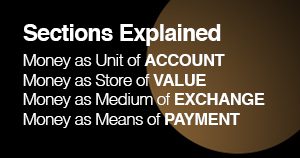Diem, the Facebook-sponsored digital currency, could be highly disruptive to the US dollar payments infrastructure, say analysts at Bank of America Merrill Lynch (BAML).
Earlier this week Diem said it was moving its operations from Switzerland to the United States and partnering with a US bank, Silvergate, to issue a new dollar-denominated stablecoin.
A stablecoin is a representation of a traditional (fiat) currency that can be transferred easily, instantaneously and at low-cost across the mobile devices that are increasingly used for digital payments.
Diem’s dollar stablecoin could launch before any European CBDC
Stablecoins can also be used in innovative, mobile-based financial applications by means of programmes called ‘smart contracts’.
According to analysts Philip Middleton, Alastair Ryan, Jason Kupferberg and Adithya Metuku of BAML, writing in a research note published on May 12, Diem’s dollar stablecoin could launch before any of the European central banks’ planned digital currencies.
In March, European Central Bank (ECB) head Christine Lagarde suggested that a digital euro might arrive by 2025 at the earliest. The ECB has yet to give a green light to the project and is expected to take a decision this summer on whether to go ahead.
Yesterday, Bank of England deputy governor Sir Jon Cunliffe said that if the UK wanted to retain public money capable of general use and available to all citizens, the state would need to issue public digital money.
In April, the UK Treasury and the Bank of England said they were launching a taskforce to coordinate work on a potential new sterling digital currency.
Meanwhile, the US Federal Reserve has said it is exploring prototypes for a digital dollar but is ‘in no rush’ to launch the project.
In the meantime, the market for digital dollars has developed largely outside government control.
Diem could significantly undercut the largely hidden costs of retail money transfers
Private-sector stablecoins issued by Tether, Circle and others, which have gained substantial assets in the last year, are either unregulated or subject to limited regulation.
According to the BAML analysts, a successful Diem dollar stablecoin could be the first, widely used retail-facing distributed ledger application to go into production. It could prove highly disruptive to existing payments and money transfer businesses, they said.
Specifically, Diem could significantly undercut the largely hidden costs of retail money transfers, the analysts said.
Citing Bundesbank data, they said that a typical consumer debit card transaction in Europe costs 67 basis points, a credit card transaction costs 170-182 basis points and a cash transaction costs 180 basis points.
In the US, the analysts said, retail payment costs are even higher: for example, PayPal’s ‘take rate’ (the revenue PayPal generates as a percentage of its total payment volume) was 197 basis points in the first quarter of 2021.
By comparison, according to the BAML analysts, citing Christian Catalini, co-creator of Diem, the new stablecoin would charge its users “single digit basis points, orders of magnitude lower than the status quo” for retail dollar payments.
Diem would be run as a for-profit entity and would earn its income primarily from software licensing fees, the analysts said, citing Catalini.
Diem will include its own programming language, called ‘Move’, Catalini said, enabling the stablecoin to be used in automated financial contracts, and users of Move will pay transaction fees for new software modules.
In the earlier version of its digital currency project, called Libra, Facebook had said it planned to earn money primarily from the interest gap between the zero interest rate payable on the stablecoin and the interest earned on the reserves backing the stablecoin.
“In early iterations there was a reliance on earning interest on funds held,” the BAML analysts cited Catalini as saying in an interview.
“It is not free stuff, just better, cheaper stuff—in our view, a classic fintech answer”
“We have moved away from this partly because of the rate environment but also because on a long-term basis we see the introduction of central bank digital currency (CBDC), which doesn’t leave treasury interest as a viable business model,” Catalini went on.
According to BAML, Diem aims to offer a secure payments infrastructure which is cheaper, more flexible and with more capabilities than the status quo.
“This suggests, it is not free stuff, just better, cheaper stuff—in our view, a classic fintech answer,” said Middleton, Ryan, Kupferberg and Metuku.
If it takes off, the dollar Diem stablecoin could also challenge the idea that cryptocurrencies like bitcoin work as a payments medium and that others like ethereum offer the best platform for programmable money, said the BAML analysts.
“Crypto needs to be embedded within a broader institutional framework to gain mass adoption,” Middleton, Ryan, Kupferberg and Metuku said.
“In the absence of intermediaries, it will be extremely difficult to safeguard consumers and ensure financial stability,” they said.
“It’s possible to view Diem in this light—a system which takes some elements of crypto and wraps mainstream compliance and institutions around it.”
Sign up here for the New Money Review newsletter
Click here for a full list of episodes of the New Money Review podcast: the future of money in 30 minutes
Related content from New Money Review









